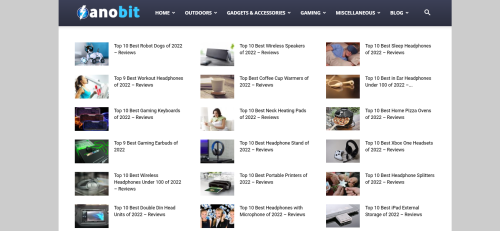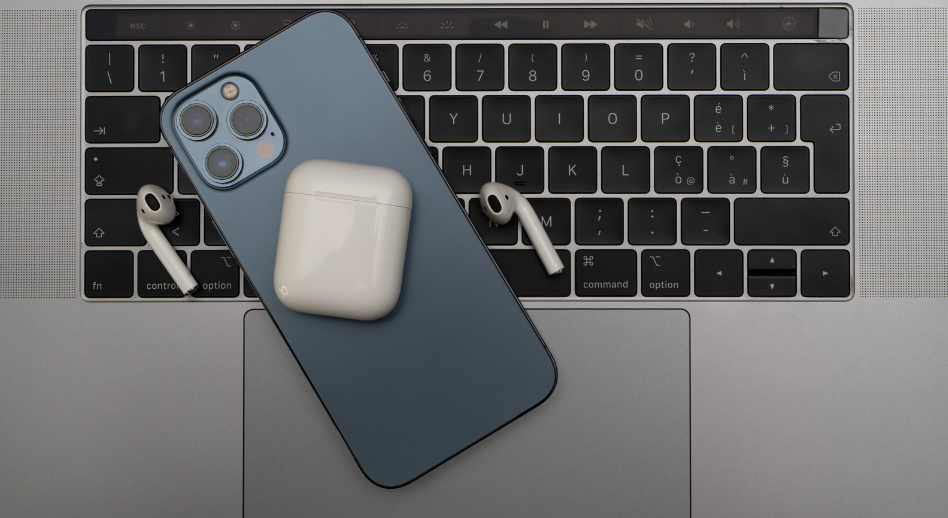Table of Contents
Apple, one of the leading technology giants in the world, has an impressive portfolio of companies under its wing. From music to semiconductors and everything in between, it’s clear that Apple is always looking to expand their reach. In this article, we’ll dive into the top 10 companies Apple owns. So whether you’re a die-hard iPhone fan or just curious about what other ventures Apple has invested in, sit back and enjoy the ride!
Top 10 Companies Owned by Apple
1. Beats Electronics
 Beats Electronics is one of the most well-known companies owned by Apple. Founded by Dr Dre and Jimmy Iovine in 2008, Beats Electronics originally started as a premium headphones brand before expanding into speakers and other audio products.
Beats Electronics is one of the most well-known companies owned by Apple. Founded by Dr Dre and Jimmy Iovine in 2008, Beats Electronics originally started as a premium headphones brand before expanding into speakers and other audio products.
Apple’s acquisition of Beats Electronics in 2014 was seen as a major move for both companies, with Apple hoping to tap into the growing demand for high-quality audio equipment while benefiting from the expertise of Dr Dre and Jimmy Iovine.
Since becoming part of Apple, Beats has continued to innovate with new products, such as their truly wireless Powerbeats Pro earbuds, which feature up to nine hours of battery life and adjustable ear hooks for a secure fit during workouts.
Beats have also been instrumental in promoting music through its “Music through the Lens” campaign, highlighting some of today’s rising stars through short documentaries exploring their creative process and journey.
Beats Electronics remains an essential part of the wider Apple ecosystem for anyone who loves music or appreciates high-end audio equipment.
2. Dialog Semiconductor
![]() Dialog Semiconductor is one of the many companies owned by Apple, and it specializes in providing power management chips for various devices. This company based in Europe has been a key player in the semiconductor industry for over three decades, creating innovative solutions to enhance battery life and performance.
Dialog Semiconductor is one of the many companies owned by Apple, and it specializes in providing power management chips for various devices. This company based in Europe has been a key player in the semiconductor industry for over three decades, creating innovative solutions to enhance battery life and performance.
Apple acquired Dialog Semiconductor’s power management business in 2018, which included patents, facilities, and more than 300 employees. With this acquisition, Apple gained even tighter control over its hardware design and manufacturing process while increasing its energy-efficient technology expertise.
Dialog Semiconductor continues to operate as an independent supplier of smart mixed-signal integrated circuits to other customers worldwide. The company prides itself on delivering high-quality products that meet customer demands for efficiency and reliability.
As part of Apple’s commitment to environmental sustainability, Dialog Semiconductor plays a crucial role in developing eco-friendly products by reducing power consumption without compromising performance. By working together with environmentally-conscious partners like Dialog Semiconductor, Apple can continue innovating while minimizing its carbon footprint on the planet.
3. Anobit
 Anobit is an Israeli-based company that specializes in flash storage technology. Apple acquired Anobit in 2011, making it one of the many companies owned by the tech giant.
Anobit is an Israeli-based company that specializes in flash storage technology. Apple acquired Anobit in 2011, making it one of the many companies owned by the tech giant.
Anobit’s technology enhances the performance and reliability of flash memory storage used in iPhones, iPads, and other Apple devices. This improved computing technology allows faster read and write speeds while extending the device’s lifespan.
Apple has integrated Anobit’s advanced NAND Flash Memory solutions into its products to offer a more seamless user experience. The acquisition of Anobit has allowed Apple to maintain its dominance as a leading smartphone manufacturer by offering high-quality devices with superior performance.
Apple’s acquisition was seen as a strategic move to remain competitive with rivals such as Samsung, who already used similar technologies in their smartphones. With Anobit under its umbrella, Apple now had access to cutting-edge storage technology, giving them an edge over competitors.
Anobit’s contribution significantly enhanced various Apple products’ overall performance and user experience.
4. NeXT
 NeXT was a computer company started by Steve Jobs in 1985. After leaving Apple, Jobs wanted to create a new kind of computer appealing to businesses and educational institutions. NeXT produced high-end workstations with advanced software development, including the NeXTSTEP operating system.
NeXT was a computer company started by Steve Jobs in 1985. After leaving Apple, Jobs wanted to create a new kind of computer appealing to businesses and educational institutions. NeXT produced high-end workstations with advanced software development, including the NeXTSTEP operating system.
Despite being initially unsuccessful in the market, NeXT caught the attention of Apple, who bought the company in 1996 for $429 million. The acquisition brought Steve Jobs back to Apple as an advisor and paved the way for many innovations that we now associate with modern computing.
One of NeXT’s key contributions was its development of object-oriented programming systems. These systems allowed programmers to build more modular and flexible software applications, laying the groundwork for today’s app-driven economy.
NeXT also helped shape Apple’s design philosophy by emphasizing simplicity and elegance in hardware and software design. This influence can be seen in products like the iPhone and iPad, which continue to set industry standards today.
In summary, while not successful as a standalone company, NeXT played a crucial role in shaping modern computing through its innovative technologies and design principles.
5. Shazam

Shazam is the world’s most popular music recognition app. It was founded in 1999 and acquired by Apple in 2018 for $400 million. The app uses a smartphone’s microphone to identify songs playing around you, giving users information about the artist, album and song title.
Shazam has become an integral part of many people’s music-listening experiences. With over 1 billion downloads worldwide, it has helped countless users discover new artists and rediscover old favourites.
But Shazam isn’t just about identifying songs – it also offers features such as lyrics display, music videos, concert ticket purchasing options and more. These additional offerings have made it an all-in-one destination for music lovers.
Since its acquisition by Apple, Shazam has been integrated into Siri and iOS. So, for example, iPhone users can ask Siri, “What song is this?” to get immediate identification without even opening the app.
Shazam remains one of the most useful apps on any smartphone today thanks to its seamless integration with other services like Spotify and Apple Music and its user-friendly design.
6. PrimeSense
 PrimeSense is a company that develops depth-sensing technology, which allows devices to perceive the world in 3D. Apple acquired PrimeSense in 2013 for $350 million and has since integrated its technology into various products.
PrimeSense is a company that develops depth-sensing technology, which allows devices to perceive the world in 3D. Apple acquired PrimeSense in 2013 for $350 million and has since integrated its technology into various products.
One notable use of PrimeSense’s technology can be found in the Face ID feature on newer iPhone models. The depth-sensing camera system uses infrared sensors to create a detailed 3D map of the user’s face, allowing for secure facial recognition.
In addition to Face ID, PrimeSense’s technology has been used in Apple’s augmented reality initiatives. Accurately perceiving depth and distance is crucial for creating realistic A.R. experiences.
PrimeSense’s expertise in depth-sensing has proven invaluable for Apple as they continue to innovate and push boundaries with new technologies.
7. AuthenTec
 AuthenTec is one of the top companies owned by Apple, thanks to its advanced security technology. The company specializes in fingerprint sensors and biometric authentication systems in many Apple devices such as iPhones, iPads, and MacBook Pros.
AuthenTec is one of the top companies owned by Apple, thanks to its advanced security technology. The company specializes in fingerprint sensors and biometric authentication systems in many Apple devices such as iPhones, iPads, and MacBook Pros.
AuthenTec’s products provide users with a simple yet secure way to access their devices while protecting sensitive data from unauthorized access. For example, with AuthenTec’s Touch ID sensor, users can unlock their iPhone or iPad with a finger touch.
Aside from its work on biometric authentication systems, AuthenTec also developed encryption solutions for mobile devices, making it easier for businesses & individuals to protect their confidential information.
AuthenTec’s innovative technologies, Apple has been able to stay ahead of the curve regarding mobile security. However, as hackers become more sophisticated in their attacks against personal devices, having strong security measures like those offered by AuthenTec becomes increasingly important.
8. P. A. Semi

Apple acquired P.A. Semi, a chip-making company, in 2008 for $278 million. The acquisition of P.A. Semi allowed Apple to develop their chips for devices like the iPhone and iPad, giving them greater control over their products’ performance and power efficiency.
P.A. Semi had a reputation for making high-performance, low-power chips, which made them an attractive target for Apple’s growing hardware ambitions. By bringing P.A. Semi in-house, Apple could better optimize its hardware and software integration to deliver more powerful devices with longer battery life.
The acquisition of P.A. Semi paved the way for Apple’s A-series chips used in all iPhones and iPads today. These custom-designed processors have helped set new mobile computing performance standards while improving energy efficiency.
Today, many consider P.A. Semi is one of the key acquisitions that helped establish Apple as a leader in mobile technology innovation – something they continue to maintain even today through new product launches yearly!
9. Quattro Wireless
 Quattro Wireless is one of the companies owned by Apple that focuses on mobile advertising. Founded in 2006, Quattro Wireless aimed to help advertisers reach their target audience through mobile devices. The company’s technology allowed personalized and targeted ads based on user behaviour and location.
Quattro Wireless is one of the companies owned by Apple that focuses on mobile advertising. Founded in 2006, Quattro Wireless aimed to help advertisers reach their target audience through mobile devices. The company’s technology allowed personalized and targeted ads based on user behaviour and location.
In 2010, Apple acquired Quattro Wireless for $275 million to compete with Google’s acquisition of AdMob. After the acquisition, Quattro Wireless became a part of Apple’s iAd platform, offering interactive and engaging app advertisements.
Quattro Wireless had an extensive network of publishers and developers who used its services to monetize their apps through ads. Its technology also allowed advertisers to track the performance of their campaigns in real time.
Although iAd was discontinued in 2016 due to low adoption rates among advertisers, Quattro Wireless played a crucial role in Apple’s early ventures into mobile advertising. Today, its legacy lives on as part of Apple’s long-standing efforts towards personalization and increasing ad relevance for consumers while keeping data privacy a top priority.
10. C3 Technologies
 C3 Technologies is a company owned by Apple that specializes in 3D mapping technology. This Swedish-based company was acquired by Apple back in 2011, & since then, it has been providing advanced 3D map solutions for various applications.
C3 Technologies is a company owned by Apple that specializes in 3D mapping technology. This Swedish-based company was acquired by Apple back in 2011, & since then, it has been providing advanced 3D map solutions for various applications.
One of the key features of C3 Technologies’ technology is its ability to generate highly detailed and accurate maps using aerial imagery. By combining high-resolution images with advanced algorithms, C3 Technologies can create three-dimensional maps that are visually stunning and useful for a wide range of purposes.
The primary application of C3’s technology is in the field of navigation. The highly detailed maps generated by their software can provide more accurate and reliable driving directions and improved location services for mobile devices.
Besides navigation, C3’s 3D mapping technology can also be utilized in other areas, such as urban planning, the gaming industry, virtual reality experiences and more. With continuous development under Apple’s ownership, we could expect even more innovative uses from this amazing company.
Conclusion
In summary, Apple has made some strategic acquisitions to enhance and diversify its products and services over the years. From acquiring music company Beats Electronics to Israeli flash storage solutions Anobit, these companies have all played a crucial role in shaping Apple’s success story.
Furthermore, Shazam has revolutionized music recognition technology, while PrimeSense brought 3D sensing technology into the mainstream. AuthenTec added an extra layer of security for Apple devices, while P.A. Semi helped improve battery life on iPhones and iPads.
Quattro Wireless paved the way for iAd, allowing advertisers to reach millions of customers through their mobile devices. And C3 Technologies’ advanced mapping technology led to the creation of Apple Maps.
These ten companies are just a small part of Apple’s portfolio but have undoubtedly contributed significantly to making it one of the world’s most valuable brands today. Who knows what other exciting ventures lie ahead? Only time will tell!

